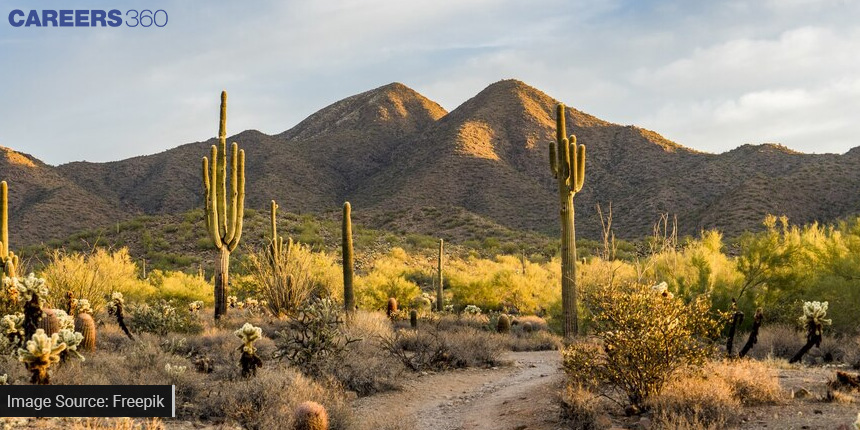Plant Adaptations In Arid Environments: Xerophytes
Arid environments, characterised by low precipitation and high evaporation rates, cover vast expanses of the Earth's surface. In these challenging ecosystems, where water is a scarce resource, plant life must evolve innovative strategies to cope with the harsh conditions. Xerophytes, a group of plants adapted to arid environments, have developed a range of unique features that enable them to thrive despite the scarcity of water.

Xerophytes: Masters of Arid Adaptations
Morphological Adaptations
Reduced Leaf Surface Area
Xerophytes often have smaller and fewer leaves, minimising the surface area exposed to the sun. This reduces water loss through transpiration, a critical adaptation for conserving precious moisture.
Modified Leaves
- Succulent leaves: Some xerophytes, such as cacti, have succulent leaves that store water. These leaves are often thick and fleshy, acting as reservoirs during periods of drought.
- Needle-like leaves: Certain xerophytes, like many desert shrubs, feature needle-like leaves to reduce water loss through a smaller surface area.
Hairy Surfaces
Trichomes: Xerophytes may have hairy surfaces with structures called trichomes that reduce air movement around the leaves. This minimises water loss by lowering transpiration rates.
Physiological Adaptations
Water-Storing Tissues
Parenchyma tissue: Xerophytes often have specialised parenchyma tissues capable of storing water. This internal reservoir provides a vital water source during dry periods.
CAM Photosynthesis
Crassulacean Acid Metabolism (CAM): Some xerophytes, including many succulents, exhibit CAM photosynthesis. This unique process allows them to open stomata at night, reducing water loss by taking in carbon dioxide during cooler hours.
Dormancy Strategies
Aestivation: During extreme dry spells, certain xerophytes undergo aestivation, a state of dormancy that allows them to survive until more favourable conditions return.
Behavioural Adaptations
Root Systems
Deep Roots: Xerophytes develop deep root systems to tap into groundwater reserves. This enables them to access water stored in the soil long after the surface has dried up.
Temporal Growth Patterns
Seasonal Growth: Some xerophytes exhibit seasonal growth patterns, becoming active during periods of increased water availability and conserving energy during droughts.
In the face of arid challenges, xerophytes have emerged as botanical marvels, showcasing myriad adaptations that enable them to thrive in environments where other plants would wither. From modified leaves and water-storing tissues to unique physiological processes like CAM photosynthesis, these plants have evolved an impressive array of tools to conquer the water scarcity of arid landscapes.
Understanding the adaptations of xerophytes not only contributes to our knowledge of plant biology but also holds potential insights for sustainable agriculture and conservation efforts. As climate change continues to impact global weather patterns, the study of xerophytes becomes increasingly relevant, offering valuable lessons in resilience and adaptation for plants and ecosystems worldwide. The intricate dance between xerophytes and their arid environments reminds us of nature's ability to innovate and persist, even in the harshest conditions.
Also, check - Mimicry And Camouflage In The Animal Kingdom
Applications for Admissions are open.
As per latest syllabus. Physics formulas, equations, & laws of class 11 & 12th chapters
JEE Main Important Chemistry formulas
Get nowAs per latest syllabus. Chemistry formulas, equations, & laws of class 11 & 12th chapters
JEE Main high scoring chapters and topics
Get nowAs per latest 2024 syllabus. Study 40% syllabus and score upto 100% marks in JEE
JEE Main Important Mathematics Formulas
Get nowAs per latest syllabus. Maths formulas, equations, & theorems of class 11 & 12th chapters
